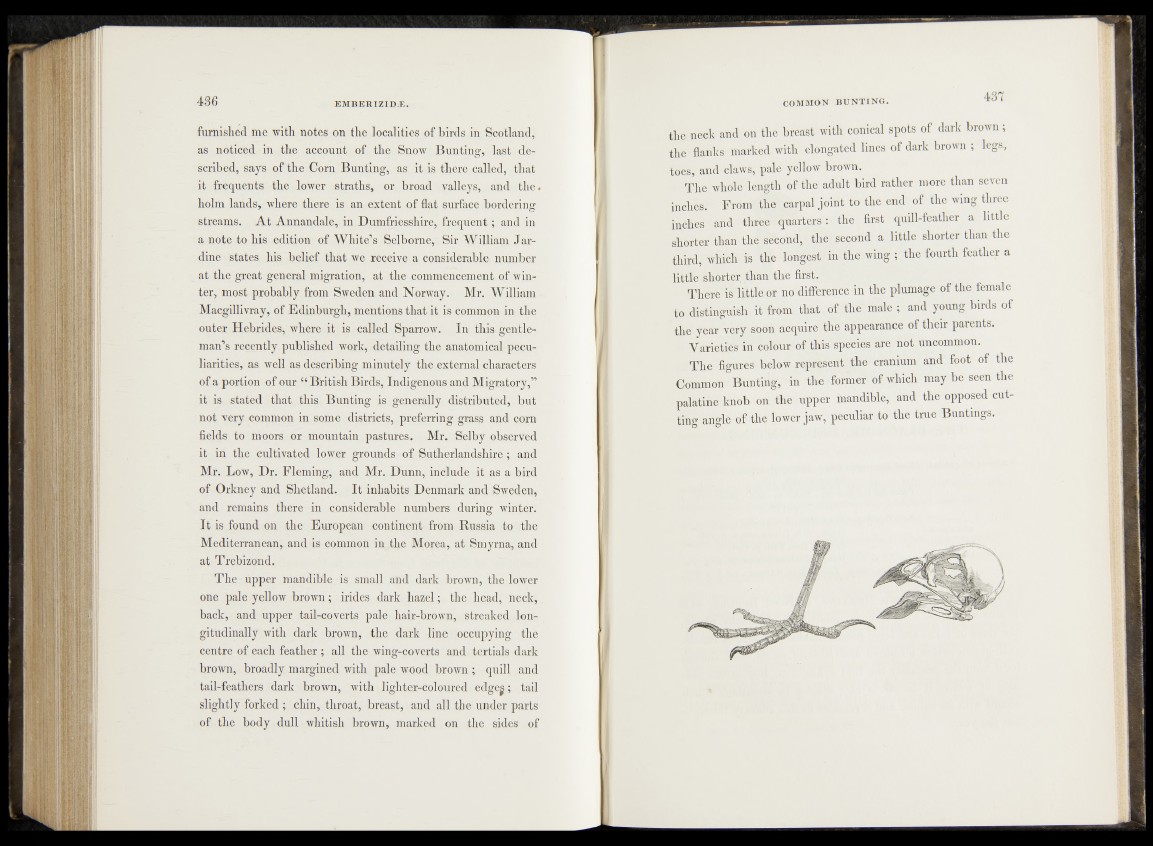
furnished me with notes on the localities of birds in Scotland,
as noticed in the account of the Snow Bunting, last described,
says of the Corn Bunting, as it is there called, that
it frequents the lower straths, or broad valleys, and the.
holm lands, where there is an extent of flat surface bordering
streams. At Annandale, in Dumfriesshire, frequent; and in
a note to his edition of White’s Selborne, Sir William Jar-
dine states his belief that we receive a considerable number
at the great general migration, at the commencement of winter,
most probably from Sweden and Norway. Mr. William
Macgillivray, of Edinburgh, mentions that it is common in the
outer Hebrides, where it is called Sparrow. In this gentleman’s
recently published work, detailing the anatomical peculiarities,
as well as describing minutely the external characters
of a portion of our “ British Birds, Indigenous and Migratory,”
it is stated that this Bunting is generally distributed, but
not very common in some districts, preferring grass and corn
fields to moors or mountain pastures. Mr. Selby observed
it in the cultivated lower grounds of Sutherlandshire ; and
Mr. Low, Dr. Fleming, and Mr. Dunn, include it as a bird
of Orkney and Shetland. It inhabits Denmark and Sweden,
and remains there in considerable numbers during winter.
It is found on the European continent from Russia to the
Mediterranean, and is common in the Morea, at Smyrna, and
at Trebizond.
The upper mandible is small and dark brown, the lower
one pale yellow brown; irides dark hazel; the head, neck,
back, and upper tail-coverts pale hair-brown, streaked longitudinally
with dark brown, the dark line occupying the
centre of each feather ; all the wing-coverts and tertials dark
brown, broadly margined with pale wood brown ; quill and
tail-feathers dark brown, with lighter-coloured edges; tail
slightly forked ; chin, throat, breast, and all the under parts
of the body dull whitish brown, marked on the sides of
the neck and on the breast with conical spots of dark brown;
the flanks marked with elongated lines of dark brown ; legs,
toes, and claws, pale yellow brown.
The whole length of the adult bird rather more than seven
inches. From the carpal joint to the end of the wing three
inches and three quarters: the first quill-feather a little
shorter than the second, the second a little shorter than the
third, which is the longest in the wing ; the fourth feather a
little shorter than the first.
There is little or no difference in the plumage of the female
to distinguish it from that of the male ; and young birds of
the year very soon acquire the appearance of their parents.
Varieties in colour of this species are not uncommon.
The figures below represent the cranium and foot of the
Common Bunting, in the former of which may be seen the
palatine knob on the upper mandible, and the opposed cutting
angle of the lower jaw, peculiar to the true Buntings.